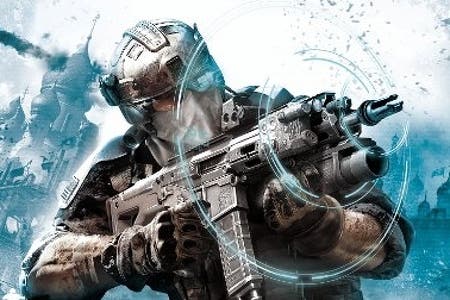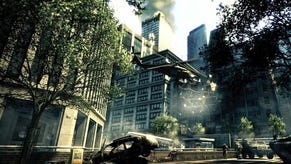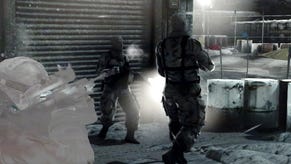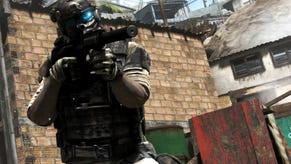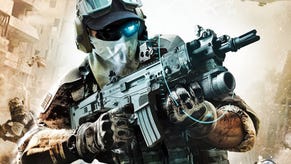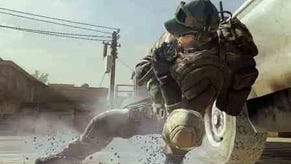Face-Off: Ghost Recon: Future Soldier
Ghosted vision.
| - | Xbox 360 | PlayStation 3 |
|---|---|---|
| Disc Size | 7.62GB | 10.31GB |
| Install | 7.62GB (optional) | 6349MB (mandatory) |
| Surround Support | Dolby Digital | Dolby Digital, DTS, 5.1LPCM |
With Future Soldier, the Ghost Recon series is back on console platforms after a five year leave of absence. Much has changed in the third person shooter scene since Advanced Warfighter 2 made its mark in 2007 and the series has had to adapt accordingly to match expectations in both its narrative scope and technical design. Thankfully the series' focus on stealth holds true, and even with a few on-rails set-pieces thrown in to keep with the current trends, it hangs on to its slower-paced identity.
The technology driving the game has moved on as well. Ubisoft's YETI engine returns in a heavily modified state, having been pioneered in the previous console entries in the series. This time, it offers an improved lighting model alongside some convincing effects for heat waves and smoke which have an authentic impact on visibility during a mission. As is often the case, the PC version's release lags behind by several weeks for additional tweaking, and is this time set to use the same principal code-base as the other versions, rather than following the previous game's template and being built around an entirely different engine - this time, the core experience is being shared.
As is increasingly becoming the case these days, multi-platform projects are being carried out with a much greater respect for the PS3 and 360's architecture, and the ways to build a like-for-like game experience around them. For Future Soldier, developer Ubisoft Paris have come close to the fabled "console parity" but between your preferences for v-sync, lighting implementations and motion-based control, there are some differences worth taking into account.
To get the ball rolling, let's take a close look at each platform's visuals in a direct side-by-side comparison. Here we have the traditional face-off video running at 50 per cent speed, backed up by our Ghost Recon: Future Soldier comparison gallery.
"The 360 version seems to benefit from an added level of sharpness but both games are sub-HD. It's the post-process anti-aliasing that is the culprit."
YETI: Lighting and Shadow Under the Looking Glass
Looking at each frame side-by-side, the 360 version appears to benefit from an added level of sharpness. The gut reaction to this is to call foul on a lower internal framebuffer from PS3 side, but in truth, a straight-forward pixel-count reveals that they both appear to run at the same 1024x600 resolution. Without fail, we get 30 edges from 36 pixels on the vertical axis, and 34 edges from 40 on the horizontal, leaving us with a noticeably sub-HD base resolution on each console.
But where does the PS3's softer look stem from? In the end, it has little to do with the number of pixels being pushed out, and much to do with how each image is being treated by differing anti-aliasing filters. The PS3 seems to use a less refined implementation of the FXAA post-processing filter, resulting in a stripping down of detail in texture-work and grass spites, especially evident the further into the distance you look. This should be in service of an image liberated from jaggies, but curiously, these artifacts are still very prominent when walking around urban environments packed with sharper, high contrast objects. By comparison, the 360 looks sharper overall via its own brand of post-processing AA, where its edge-detection also happens to do a more thorough job of reducing aliasing.
Lighting is another huge distinguishing point. Each version's illumination falls across characters in varying ways, and as a result, shadows can cast off in radically different directions. This leaves some cut-scenes looking far more dramatic on PS3, and sometimes moreso on 360; in one explosive scene during the Nigeria stage we see light shafts trailing around a character's shoulders on 360 simply because the sun happens to be positioned behind them. On the other hand, abseiling downhill during the prologue mission reveals a noticeably higher level of shadowing around plants on PS3.
"Each version's illumination falls across characters in varying ways, and as a result, shadows can cast off in radically different directions with some dramatic differences."
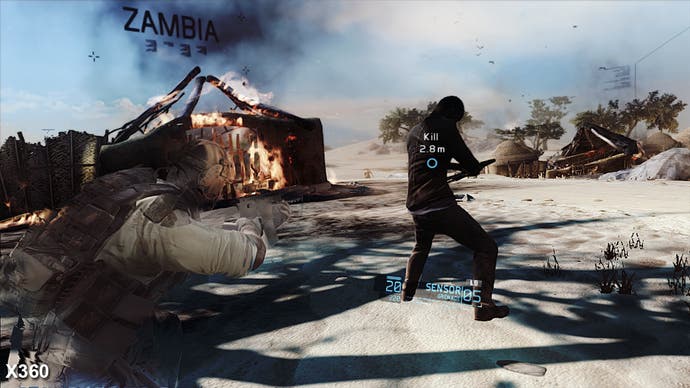

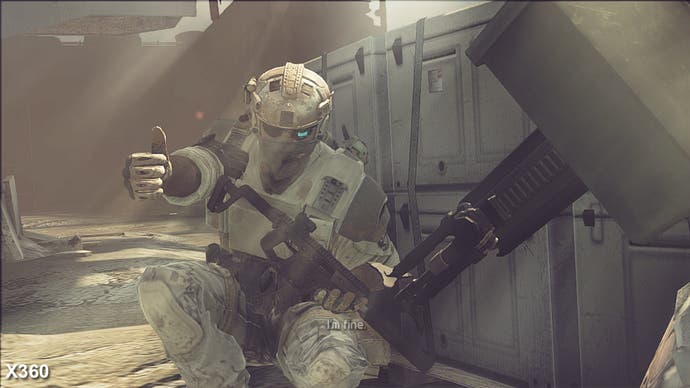
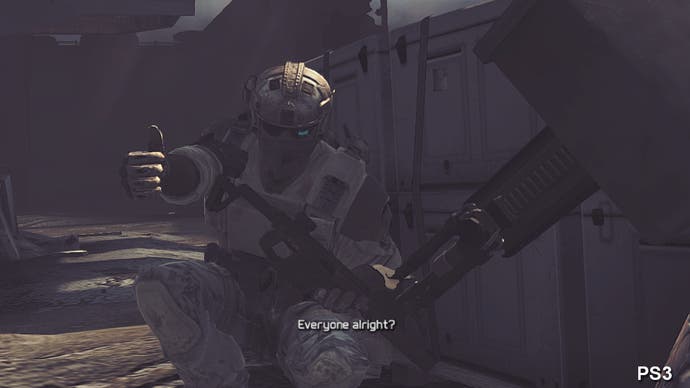
Both consoles support ambient occlusion (otherwise known as indirect shadowing) too, though the PS3's method can result in some light banding- a gradation to the tone of the shadow which stands out when viewed from the side. As far as other effects are concerned, everything else is a match; from the chequered depth of field right down to each pixel on the texture-work. For gameplay at least, the only difference above and beyond these points is a marginally wider field of view on the 360 version, which is only perceptible under close scrutiny of matching images.
Sub-HD resolution aside, the visual direction of Future Soldier can sometimes hold itself up with the other luminaries of the genre. The art team clearly followed their visual reference points faithfully for each locale, with swirling dust clouds and heat waves rising from the ground in Namibia stage - both effects hugely aiding the game's atmosphere. Unfortunately, there are some glaring rough edges which really drag the overall presentation down a notch. Ground texture resolution is abysmally low in places - a problem common to both platforms, and only accentuated by some cut-scenes which specifically frame them up-close. It's jarring, but only because so much work has been put into other aspects of the visuals.
Another sore spot is the use of Bink video, in effect for major cut-scenes deemed too strenuous for the engine, and also rudimentary pre-level briefings. The 360 version ships with markedly lower quality encodes than the PS3, where we find that the Blu-ray holds an extra 3GB of video data. This accounts for a grand bulk of the difference in disc sizes, but nevertheless, macro-blocking artifacts are still easy to pick out on both consoles. Coming from a game like Max Payne 3, which seamlessly dove-tails between higher quality Bink videos and in-engine cut-scenes to avoid disrupting the story's momentum, we find the number of load times between levels is still surprisingly high.
"FMV video quality isn't great on both versions but at least Ubisoft has utilised higher bandwidth encodes on PS3, making use of the extra space available on the Blu-ray disc."
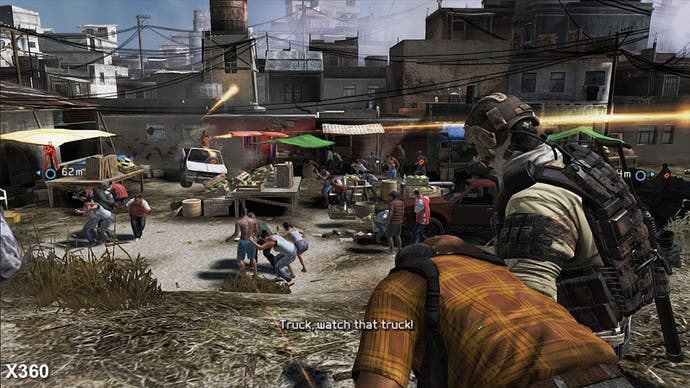
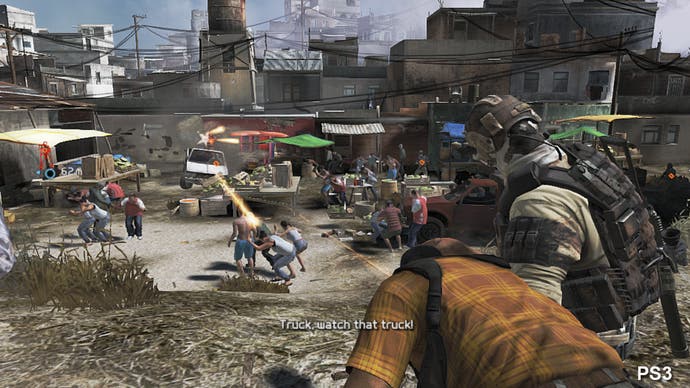
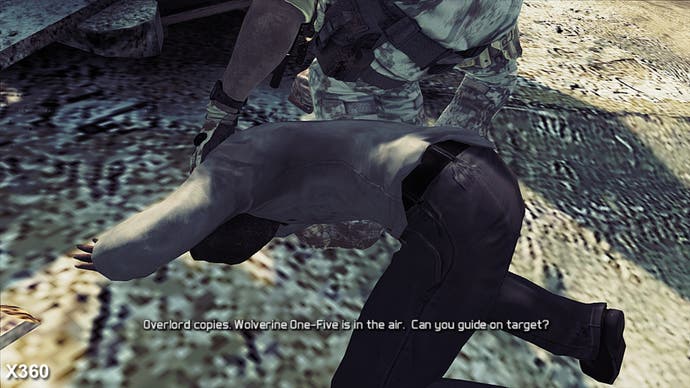

Fortunately, Future Soldier remains up to speed on its support of motion controls. On 360, Kinect features are allowed in the Gunsmith mode before dispatching to a level - all told, more of a diversion from the main course than an outright new way of playing the game. Here, you're given the freedom to swipe through the gun racks with an exaggerated gesture, configure scopes and attachments by calling out their type, and then finally put your build to the test in a firing range.
Those who saw the game's Kinect demonstration at last year's E3 may be disappointed to see the axing of direct body control, where you were once able to strafe by tilting your body to either side - perhaps a bit too finicky and prone to misinterpretation for a place in the final release.
By comparison, Move offers a far more comprehensive level of player control. Pointing towards attachments and icons allows you to navigate the Gunsmith menu, and while in the shooting gallery, the addition of a navigation controller also gives you full control over the player movement. The lack of a dead-zone does make aiming with the Move controller feel unwieldy for all its sensitivity, but there are a few genuine advantages to using this control method.
For one, aiming your reticle to your next point of cover can be far more direct than picking one out with the right analogue stick. For it to be a complete replacement for the Dual Shock, the bounding box approach taken by the likes of Killzone 3 should have really been provided as an alternative option here.
Performance: Tearing Through Ghost Recon
Moving on to performance, both consoles vie for a targeted 30 frames per second refresh, and succeed in staying close to that value most of the time. A look at matching in-engine cut-scenes shows the 360 to be more consistent in keeping it that way, however.
Both the PS3 and 360 make use of adaptive v-sync, which helps to keep the frame rate anchored to 30FPS, but at the risk of falling short, both will disengage the sync causing tearing to manifest. This has wildly different permutations for both platforms. On the one hand, the 360 version only very rarely slips in a torn frame to stay within its rendering budget, and if it does, it's typically a solitary instance of it near the top of the screen. Given that this only usually happens once or twice per cut-scene, this is a respectable result. By comparison, the PS3 makes a bit more of a mess of things here, with long stretches of tearing cropping up in the top 20 per cent of the screen during cut-scenes.
"By and large both versions adhere to the 30FPS target frame-rate, but the PS3 manifests far more screen-tear in the top 20 per cent of the screen."
PS3 screen-tear is primarily linked to the smoke effect left by grenades, plus the effusions above burning huts in the Nigeria level; the tearing chops precisely the parts of the screen where these effects are being rendered, making the cause easy to pinpoint. The same applies for alpha effects used for water splashes and a great volume of panicking villagers around marketplaces, though these are rarely culpable for long stretches of tearing.
In terms of frame rate, we find the PS3 also falls short of the 360's performance, but these dips aren't common enough to detract from the experience of playing the game. Typically, it's isolated to two on-rails set-piece moments we see in the game, where the player's movement and camera are entirely directed as they guide a hostage. The lowest we see it go is around 15FPS during the scripted fire-fights that ensue around you at these points, but these aren't representative of actual free-moving combat sections.
In practice, it's to Ubisoft Paris' credit that the frame rate is more consistent during combat than it is for cut-scenes. For the sake of controller response, Future Soldier has certainly been optimised with the right priorities in mind for both platforms, though the PS3's reliance on disengaging v-sync proves to be a necessity in order to match the 360's refresh. The lowest we see either platform go down to is 25FPS, particularly during one gunfight factoring in over eight enemies spread over a wide, expanse of rubble-spread terrain. For the majority of our time spent with both versions of the game, though, this really hasn't detracted from the core gameplay experience.
"Future Soldier has certainly been optimised with the right priorities in mind for both platforms, though the PS3's reliance on disengaging v-sync proves to be a necessity in order to match the 360's refresh."
Ghost Recon Future Solider: The Digital Foundry Verdict
To round up, if you're one of the lucky souls who happen to own both platforms, the 360 version comes as a clear recommendation here for its smoother frame rate and clearer image quality, though it should be stressed that the PS3 is no slouch.
Variances in lighting aside, both games offer up very close results in the visual department. The superior treatment of the 360's image comes as a result of its superior edge detect algorithm, where texture-work can look a tad blurred over on PS3 by comparison. The sub-HD native resolution leaves some noticeable aliasing on both platforms too, but the 360's post-processing tackles this with a greater degree of success
The heavy compression on video assets and the low resolution floor texturing are equally woeful on both platforms, though to the PS3's advantage, the higher quality Bink encoding does help to alleviate the issue. We also notice that loading new levels is generally more rapid process on PS3 - no doubt in part due to the mandatory HDD install taking up just over 6GB - and that Sony's take on motion control is more fleshed out here.
On the performance side of the equation, we see an undeniable lead on 360 for its smoother frame rate and almost non-existent tearing. The frequency at which the PS3 version disengages its v-sync can be a distraction, but it's evidently a necessity in order to uphold performance as tightly to the 30FPS target line as possible. Once again we're left wanting for a delayed PC version, where we hope to see visual shortcomings, such as its texture-work and low native resolution, brought up to the high standard of its environmental details and effects. There's an even better-looking game just waiting to break out.
